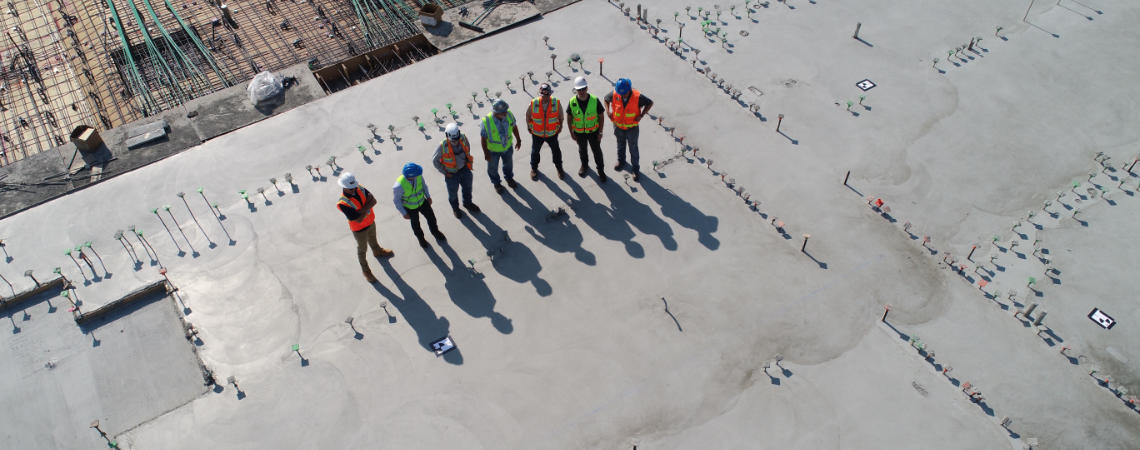Permit to Work Systems (PTW) are a critical element of safety management in hazardous industries such as oil and gas, mining, construction, and manufacturing. They help to ensure that work is carried out safely by identifying and controlling hazards, and by ensuring that appropriate precautions are taken before work begins. They’re undoubtedly useful, however, a variety of challenges can make their application and enforcement difficult. In this article, we’ll explore some of the most common challenges faced in the application of Permit To Work systems and provide strategies for overcoming them.
Resistance from Employees
One of the biggest challenges faced by PTW systems is resistance from employees. People naturally fear change, so workers may view the PTW system as bureaucratic, time-consuming, and inconvenient, and may be reluctant to comply with the additional paperwork and processes required to obtain a permit. Additionally, workers may be more focused on getting the job done quickly than on following safety procedures, which can lead to non-compliance with Permit To Work requirements.
So – how do we move forward? It’s essential to involve employees in the development, implementation and application of the PTW system. You will get a higher level of buy-in from colleagues and compliance with safety procedures when they feel that they have a stake in the process and when they understand the importance of the procedures for their own safety. Communication is also key – it’s important to explain the reasons for the PTW system, the benefits it provides, and the consequences of non-compliance. Training and education can also help to ensure that workers understand the procedures and feel confident in their ability to comply with them.
Most companies which succeed in the application of Permit To Work systems rely heavily on a steering committee, consisting of staff from different parts of the organisation. The team can provide input on the development and implementation of the PTW system, ensuring that it meets the needs of all workers. Additionally, it can serve as a communication channel, providing regular updates on the progress of the PTW system and addressing any concerns or questions that arise.
Incentives can help to encourage buy-in, workers who consistently comply with PTW requirements could be recognised or rewarded in some way, such as through a bonus or public recognition. This can help to create a culture of compliance and reinforce the importance of the PTW system.

Lack of Buy-In from Management
Another common challenge faced in implementing any PTW system is a lack of buy-in from management. They may push back against the additional paperwork and processes required by the system, or they may not fully understand the importance of the system for ensuring safety. Additionally, management may be more focused on meeting production goals and other business requirements than on complying with safety procedures, which can manifest as a lack of support for the PTW system.
Clear communication is essential here. Management need to be made aware of the importance of the PTW system for ensuring safety and reducing risk. They should understand that the PTW system is a critical element of the organization’s safety management system and that the risks of not having a reliable system can be extremely severe, with consequences both for workers and for the organisation as a whole. Providing data on the benefits of the PTW system, such as reduced incidents and injuries, can also help to demonstrate its value.
Involving senior staff in the development and implementation process can have huge benefits. Accessing the experience of your senior team will help to ensure that the system meets the needs of the organisation and that management is invested in its success. Additionally, providing regular updates on the progress of the PTW system and its impact on safety can help to demonstrate the value of the system and reinforce the importance of compliance.
Difficulty in Obtaining Buy-In from Stakeholders
PTW systems can also face challenges in obtaining buy-in from other stakeholders, such as contractors, regulators, and customers who may not be familiar with the PTW system, may have different safety procedures in place, or may simply be unaware of the potential benefits of the system.
As before, it’s important to clearly communicate the benefits and importance of the PTW system. Training and education sessions can help, some companies also include an area on their corporate intranet which can also act as a resource for training materials and links to the system. Additionally, it’s important to involve stakeholders in the development and implementation of the PTW system to ensure that it meets their needs and aligns with their safety procedures.
Configuring the PTW system to align with industry best practices and regulatory requirements should help to increase the credibility of the system and make it easier for stakeholders to understand and adopt. You should find that this also helps to streamline the permit approval process, reducing the time and resources required to obtain a permit.

Inadequate Risk Assessment
Risk assessment should be at the heart of every permit, helping to identify and control hazards to ensure that all work is performed safely. A poorly designed or implemented risk assessment process can lead to incorrect hazard identification, inadequate risk control measures, or missed hazards, all of which can lead to incidents or injuries.
A typical risk assessment process will include :
- Identification of all hazards relating to the tasks to be performed under the permit
- Assessing the severity and likelihood of those hazards
- Identifying appropriate risk control measures to mitigate the risks. It can be helpful to include feedback from multiple stakeholders here
Additionally, it’s essential to ensure that the risk assessment process is carried out by competent and trained personnel who understand the hazards associated with the work and the risk control measures required to mitigate those hazards. It’s also a good idea to regularly review the process to ensure that it continues to be effective.
Inconsistent Enforcement
For the permit to work system to succeed, it’s vital that everyone uses it properly. Particularly if replacing an existing system it’s important that a clean transition is made to the new system so that you do not end up with gaps in the process, causing confusion and increasing risk. Another huge risk is that the credibility of the system will be undermined, which will be a barrier to adoption.
Establishing clear and consistent processes for permit creation and management is critical to success – ensure that all permits are reviewed by suitably qualified personnel at each stage from issue to handback. The system should be flexible enough to cater for all the tasks to be undertaken by the business, without forcing staff to navigate unnecessary or cumbersome screens. Audit teams should also regularly review use of the PTW system to ensure that the permit process is operating as intended and that staff are comfortable with usage.
Conclusion
Permit to Work systems should be at the heart of the HSE portfolio in any hazardous industry. As in any major organisational change, failure to get buy-in from colleagues can lead to an unsatisfactory outcome. This risk can be mitigated by involving employees, management, and stakeholders in the development and implementation of the PTW system, providing education and training, and establishing clear and consistent procedures for permit approval and enforcement.
